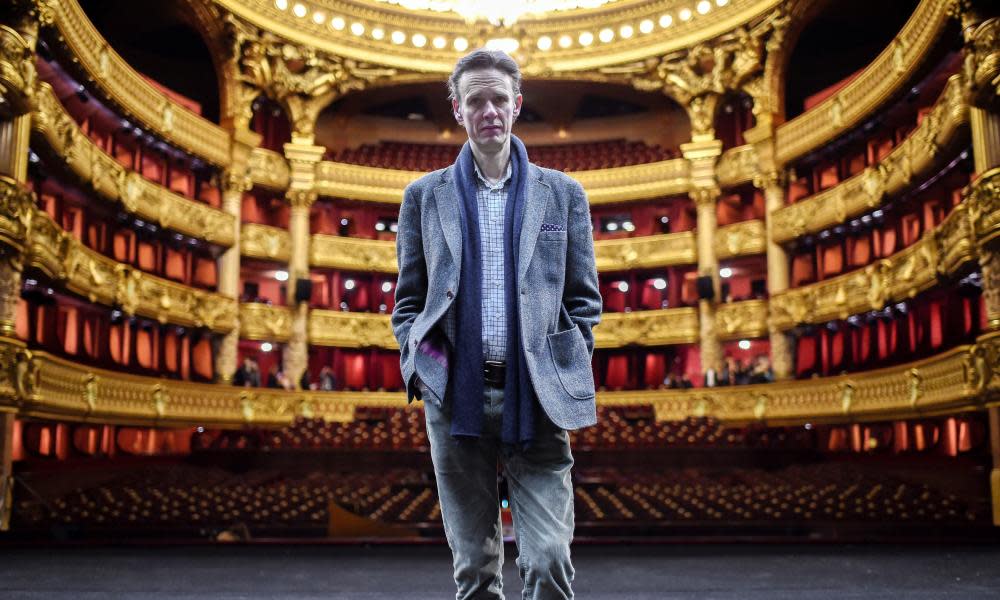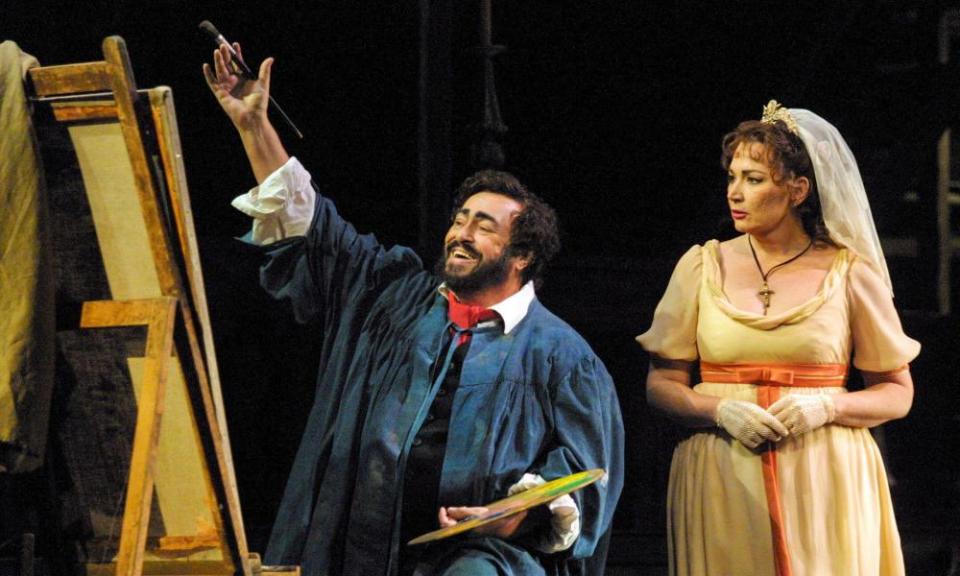Pavarotti, Billie Holiday and me: the secrets of what makes a great singer

The iconic tenor of my lifetime – and in terms of sheer voice, the very best – was Luciano Pavarotti. I only heard him once in the flesh, in a production of Verdi’s La Forza del Destino at London’s Royal Opera House. His interest in the stage action was limited, but his vocal resources were only marginally depleted after decades of shining high Cs, and I felt the magic.
What had propelled Pavarotti into the stratosphere of international celebrity was a celebratory event at the 1990 World Cup in the Baths of Caracalla in Rome: the famous Three Tenors concert in which he sang Puccini’s aria from Turandot, Nessun Dorma, with its climactic high B on the word “vincero” – “I will win”.
I was then a young singer making my way in the apparently more rarefied worlds of Lieder and Mozart opera, and I was more than a little snobbish about all this; a snobbishness that no doubt sprang from defensiveness about my vocal capacities, as well as protectiveness for the leaner repertoire that I performed and loved. Sir Colin Davis very adventurously once asked me to sing the Verdi Requiem, the nearest I ever got to the Italian big guns, but I knew it was not for me.

But the Ron Howard documentary on Pavarotti set me thinking about what we really value in great singing. The triumphalism, the sheer athleticism of the classic tenor voice is all very well, but watching Pavarotti singing Puccini’s E lucevan le stelle from Tosca, late in his career, conducted by his friend and fellow tenor Plácido Domingo, I realised that he was not just a voice, not just a tenor, but an expressive artist of extraordinary gifts. The desperation of the aria draws from Pavarotti that miraculous interaction between the personal life experience and artistic material that is at the heart of what great singers do. Great singers such as Pavarotti, or Billie Holiday, or Bob Dylan.
My latest recording is a collection of 17th-century Venetian and Neapolitan opera arias, written in an era in which the tenor was not the shining star he became in the course of the 19th and 20th centuries. Indeed, the beginnings of the tenor were lowly. The term itself comes from the Latin verb “tenere” – “to hold” – and emerged from medieval vocal ensemble music in which the higher male voice provided an underpinning in terms of pitch and long vowels. Nothing glamorous there. But by the early 17th century, the tenor had emerged as a crucial figure in the development of the new form of opera. The earliest opera that we still perform as part of the repertoire is Monteverdi’s Orfeo, written in 1607 for the Gonzaga court at Mantua, with the dominating title role played by a tenor. As Giovanni Battista Dona had it in 1635, “the tenor has a better adjusted and more perfectly organised body,” something with which we can all agree.
The story that is usually told is that the glamour of the castrato singer – a male mezzo soprano or soprano with prodigious power and virtuosity – came in the course of the 17th century, to force the tenor into the shadows. While there is an element of truth in this, it remained the case that significant roles were written for particularly charismatic singers with tenor voices, well into the 18th century – not least the Handelian triumvirate of Francesco Borosini, Annibale Pio Fabri and John Beard. It’s also the case that arias written for high voices, castrato and female, were often reassigned to lower male voices in so-called octave transposition. Handel did this, as did many of his contemporaries, adjusting their music to the voices on hand.
My recording includes both of these sorts of arias, and what has interested me most in them has been the opportunity they offer for a sort of singing that is far removed from the clarion high-wire ascendancy of the post-Romantic tenor and the roles for which Pavarotti and Domingo were most famous. The orchestras these arias were written for were smaller, as were most of the theatres they were sung in. The instruments were less loud. The vocal writing can be florid but it never focuses on sheer virtuosity, either in terms of fast passage work or cultivated high notes. There is an opportunity here to cultivate the ideal set out by one of the earliest opera composers, the tenor Jacopo Peri, of whom it was said that “his singing would have moved to tears any heart of stone”. The emphasis is on the natural voice, not over-projected, moving within a moderate extension of its speaking range and using vowel sounds and consonants to create colours in much the same way as the great jazz singers – Billie Holiday for example.
I’ve spent quite a lot of time in the past couple of years working with the jazz pianist and composer Brad Mehldau. He wrote us a song cycle, The Folly of Desire, with texts by Blake, Brecht, Yeats and Cummings among others, and with a stylistic compass from the delicately classical to a raucous impersonation of Supertramp (“with Wurlitzer”, as the directions at the head of the song read). In recital we would then perform Schumann’s Dichterliebe and a set of jazz standards, on one occasion in Prague segueing seamlessly from Schubert’s Nacht und Träume into Cole Porter’s Night and Day.
Returning to the baroque after this excursion, I remembered the great William Christie, creator of the French baroque group Les Arts Florissants, telling me 25 years ago – much to my bafflement – how much jazz there was in this music. And I note now that my favourite contemporary jazz vocalist is Cécile McLorin Salvant, trained in the French baroque. Maybe the artificial barriers are breaking down? And maybe classical singers are not first and foremost tenors, sopranos, baritones or what not, but just singers plain and simple.
• Tormento d’amore is released by Warner Classics on 18 February.

 Yahoo News
Yahoo News 
